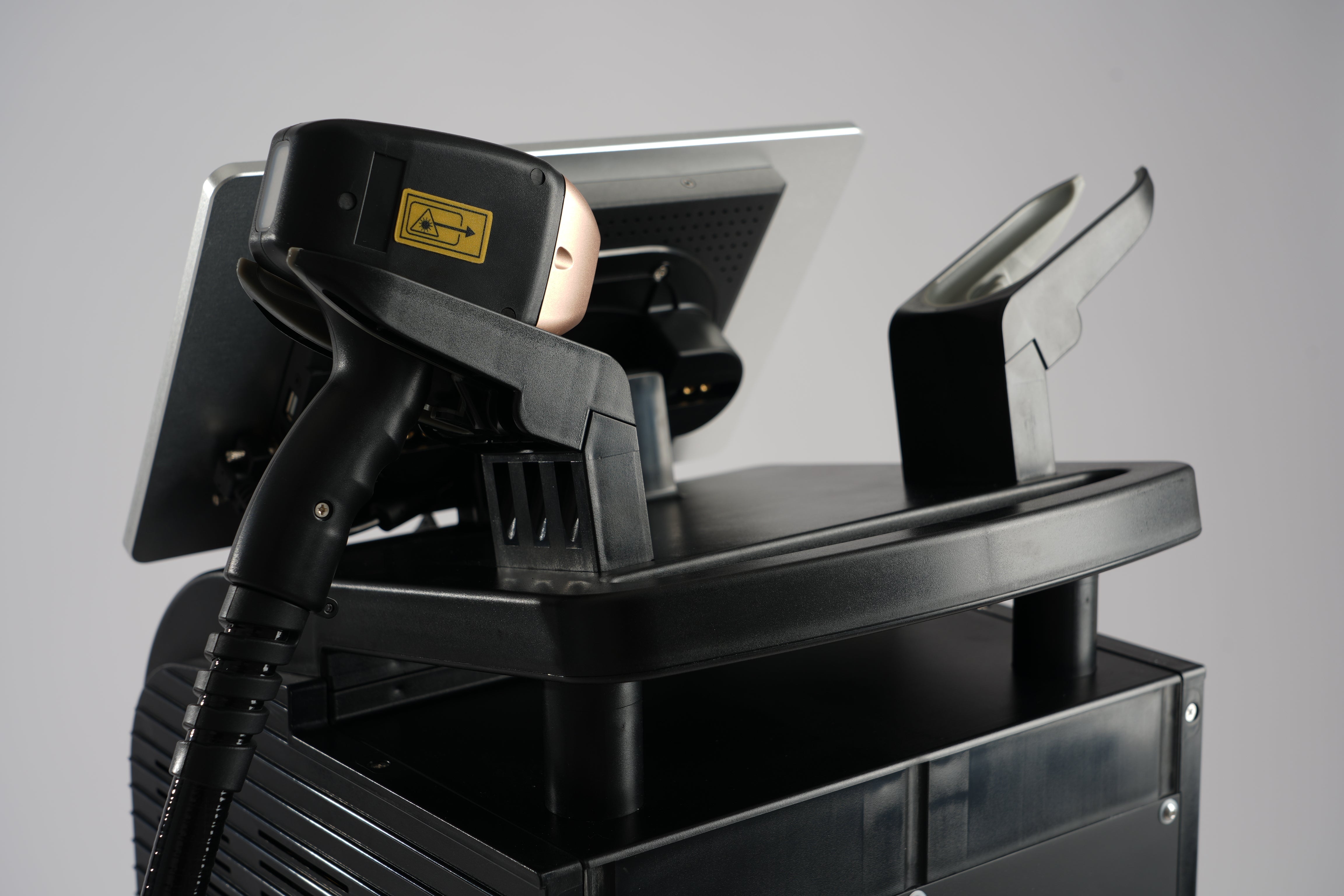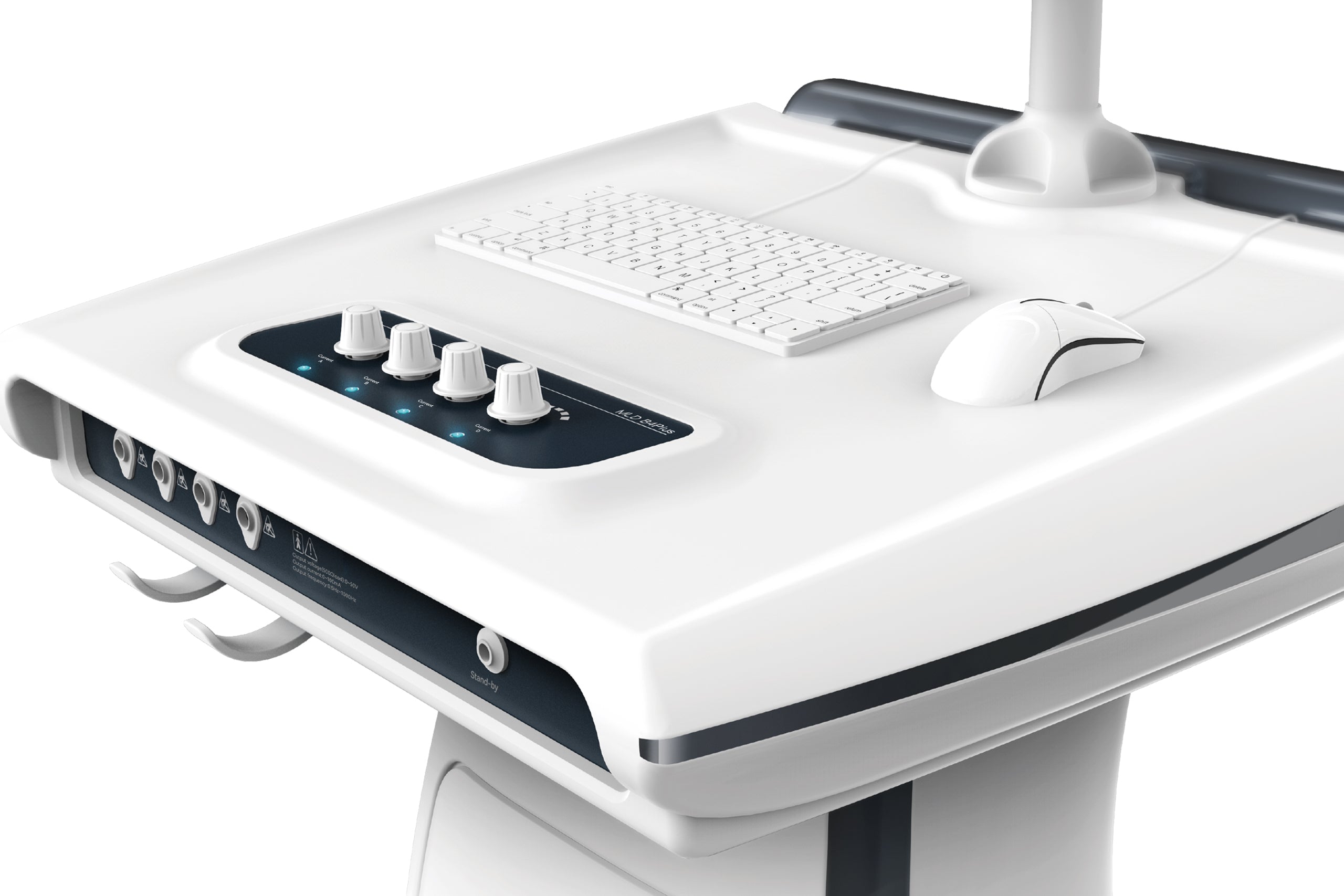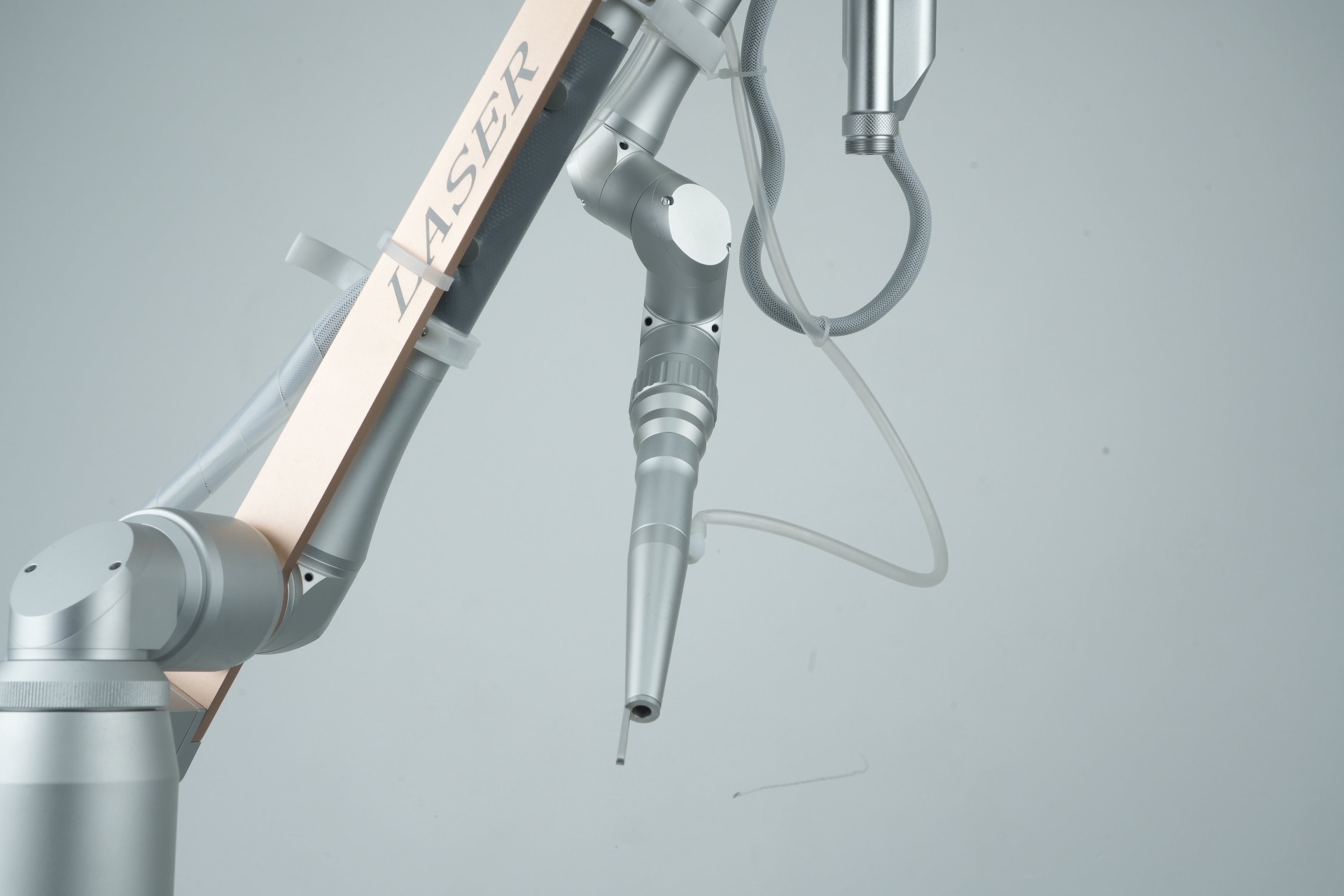In laser hair removal, spot size refers to the size of the laser beam on the skin. It determines how much skin surface is treated with each laser pulse. A larger spot size – such as a 12×24 mm rectangle on advanced diode laser devices – can cover significantly more area per pulse than conventional spots. This has two key benefits: faster treatment coverage (since more hair follicles are hit with each pulse) and enhanced light penetration depth. The physics of laser-tissue interaction show that smaller beams scatter more light in superficial tissue, whereas larger beams allow a higher percentage of photons to reach and affect deeper follicles. In essence, a big spot delivers energy more efficiently into the skin with less loss – a phenomenon sometimes called “photon recycling”. In practical terms, a larger beam can achieve the same follicle heating with lower fluence, since fewer photons are wasted to scatter. This means clinicians often don’t need to crank up the energy as much to get results, enhancing safety and comfort.
Clinically, spot size has a direct impact on hair removal efficacy. Studies have documented that using a large spot improves hair reduction results. In a study, an 18 mm spot size was more effective than a 12 mm spot size in achieving hair clearance in axillary (underarm) hair removal. The improved outcome is attributed to the higher percentage of laser light staying within the treatment area and reaching targeted hair bulbs at depth. In practical terms, a 12×24 mm spot – about 2.9 cm² of coverage – is roughly 60% larger in area than a typical 15 mm circular spot and enables practitioners to treat big areas like the back or legs more quickly and with potentially more uniform results. Fewer passes are needed to cover the skin, reducing treatment time and ensuring no patchy missed spots. For patients, a larger spot can also make sessions more comfortable, as less overlapping and fewer total pulses are required – minimizing skin irritation and treatment fatigue.
Large spot sizes also contribute to treating coarse, deeply rooted hairs effectively. Hard-to-remove hairs (such as those on a male back or chest) often lie deeper in the dermis; a big spot’s increased penetration can better damage those follicles. Conversely, very small spot sizes may struggle with deep hairs and could require more sessions or higher fluence to compensate. By choosing a device with a generously sized spot (like 12×24 mm), clinics can achieve efficient hair removal without sacrificing efficacy. It marries speed with clinical power – an important consideration for busy aesthetic practices aiming to deliver effective, evidence-based outcomes for patients.
References:
- Bhat Y.J. et al. (2020). Dermatol. Pract. Concept, 10(1): e2020048 – Laser hair removal update (spot size and depth)
- Bhat Y.J. et al. (2020). Dermatol. Pract. Concept, 10(1): e2020048 – photon scattering and recycling





Share:
How Triple-Wavelength Laser Technology Improves Hair Removal Efficacy
Understanding Scan Patterns and Energy Settings in CO₂ Laser Resurfacing